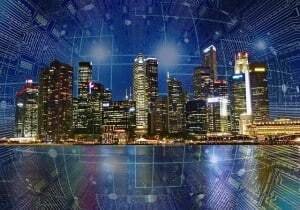K
Kathleen Martin
Guest
The use of IoT technology at city-scale is becoming a rising trend, giving birth to a generation of modern areas known as “smart cities.”
In recent years, more and more countries have begun incorporating this technology into their infrastructures. So far, IoT has been used to elevate crucial systems that affect citizens’ daily lives, such as healthcare, public transportation, workplace, waste management, and energy distribution.
According to a market report from Grand View Research, the market size of smart cities is expected to reach US$676.01 billion by 2028. In the era of advanced IoT and LoRaWAN technology, the possibilities for improving the way we live and interact with each other in cities is endless
First, what is a smart city?
By definition, it's a technologically modern urban area that uses different types of electronic methods, voice activation methods, and/or sensors to collect specific data. This data is then used within the framework put in place along with other technologies such as IoT to develop, deploy, and promote sustainable development practices and address the needs accompanied by urbanization.
What technology makes up a smart city?
This framework is made up of a network of connected objects and machines that help transmit data using wireless technology, such as LoRaWAN and the cloud. IoT comes in as the mediator between these objects and will help citizens engage with the systems created by using devices such as smartphones, tablets, cars, and even homes. Examples of this technology working within the city framework include:
In recent years, more and more countries have begun incorporating this technology into their infrastructures. So far, IoT has been used to elevate crucial systems that affect citizens’ daily lives, such as healthcare, public transportation, workplace, waste management, and energy distribution.
According to a market report from Grand View Research, the market size of smart cities is expected to reach US$676.01 billion by 2028. In the era of advanced IoT and LoRaWAN technology, the possibilities for improving the way we live and interact with each other in cities is endless
First, what is a smart city?
By definition, it's a technologically modern urban area that uses different types of electronic methods, voice activation methods, and/or sensors to collect specific data. This data is then used within the framework put in place along with other technologies such as IoT to develop, deploy, and promote sustainable development practices and address the needs accompanied by urbanization.
What technology makes up a smart city?
This framework is made up of a network of connected objects and machines that help transmit data using wireless technology, such as LoRaWAN and the cloud. IoT comes in as the mediator between these objects and will help citizens engage with the systems created by using devices such as smartphones, tablets, cars, and even homes. Examples of this technology working within the city framework include:
- Air Quality. A growing concern in most major cities, smart cities are now equipping new technologies to monitor pollution, dust, and air particles to better inform residents in real-time of the current levels of pollution in the air.
- Waste Management. IoT systems are used to help optimise the efficiency of collection and reduce operational costs while also addressing environmental issues associated with inefficient waste management. Smart sensors are also used to send signals when trash containers are full will help ensure that collectors come only when it is essential.
- Smart Infrastructure: These infrastructures often include automated lighting, smart elevators, and more, buildings and homes are able to learn from their environment to become more energy-efficient and reduce excessive power usage.
[/LIST=1]
Continue reading: https://futureiot.tech/the-role-of-iot-in-future-ready-smart-cities/

